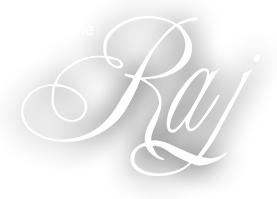Case Study 1: Secondary Hypertension
A 47-year-old female client underwent a 24-day Maharishi Ayurveda treatment program for treatment of hypertension due to kidney damage. Her health concerns began at age 17 when she was admitted to the hospital for obstruction of the right kidney. She underwent surgery to relieve the obstruction; however, the kidney had been damaged. She was told this damage would be permanent and, as a result, she could expect to have elevated blood pressures for the rest of her life. For the following thirty years she had widely varying blood pressures, with most pressures being significantly elevated.
Blood pressure readings were obtained during the two months preceding her Ayurvedic treatment program and averaged 146/97. (Blood pressure is considered high when the upper number, the systolic pressure, is 140 or higher, or when the lower number, the diastolic pressure, is 90 or higher.)
Following her in-residence stay, the client was given a program to follow at home, including dietary recommendations and specific herbal preparations. Within a few days of leaving, her blood pressure dropped significantly and became normal.
Two months later, they continued within the normal range, averaging 129/85. She reported that she had not had blood pressures this low since adolescence. In addition, an initial 24-hour creatinine clearance test (a sensitive measure of overall kidney function) was obtained at the beginning of the treatment program and repeated several weeks after its completion. The initial creatinine clearance was moderately diminished (67 ml/minute, with normal being between 80-120 ml/minute), indicating diminished overall kidney functioning. The follow-up was in the normal range at 85 ml/minute.
Case Study 2: Diabetes Type II, Hypertension, and Depression
A 55-year-old gentleman entered The Center for Chronic Disorders on November 5, 1997 for a 21-day course of treatment for hypertension, Type II diabetes (non-insulin dependent) and depression. On admission to the program, he was taking medication for control of all three disorders. Following is a brief synopsis with respect to each disorder:
- Hypertension:Prior to starting medication in 1995, his blood pressure had been elevated (170/106). A few months prior to starting the Chronic Disorders Program (CDP), he had attempted to come off the medication on his own, but his blood pressure became elevated within one week (160/90) and the medication had to be resumed. On entering the CDP his blood pressure on medication was normal; however, he was experiencing side-effects from the medication, including depression and fatigue. After beginning the CDP his blood pressure medicine was stopped, but his blood pressure remained normal. On completing the 21-day program he was placed on a home regimen, which included some of the treatments used during the CDP. Five months following the CDP, his blood pressure continued to be normal (average 121/79) without medication.
- Diabetes Type II:On admission his blood sugars were poorly controlled, with daily fasting blood sugars averaging 212 during the month prior to his entry into the program (the ideal value for a diabetic is less than 120). During the 21-day CDP, his diabetes medicine was tapered to about one-half the admission dose. Despite this decrease in medicine, his fasting blood sugars dropped to an average of 118.7 over the final 12 days of treatment, a drop of 93 points from admission. His weight decreased from 147 on admission to 144 at discharge. Five months following the CDP, his hemoglobin A1C (a test of long-range blood sugar control) was 7.4 (excellent control), compared to 8.4 just prior to admission. His medication dose remained half the pre-admission dose.
- Depression:His mood brightened considerably during the first week of treatment; he stopped the antidepressant medicine of his own volition mid-way through the program. Five months later, he continued off antidepressant medication without any depression or anxiety symptoms.
Case Study 3: Hypertension
A 45-year-old executive had uncontrolled hypertension, despite medications. He was obese and fatigued and was therefore unable to exercise; he also had an uncontrollable appetite. The patient attended an in-residence chronic disorder program. His weight dropped, and he was able to begin exercise; he also stopped both alcohol and tobacco. Six months following this program, he continued to have normal blood pressure on herbal preparations but no medications and was able to eat as much salt as he liked.















